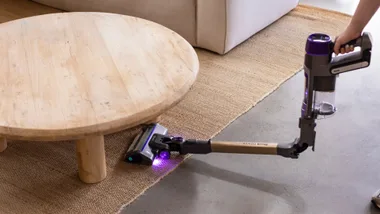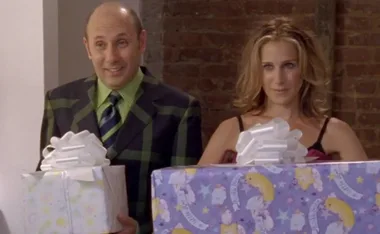Do the plants on your balcony literally seem to shrink? You buy them all green and healthy and almost immediately it seems they start to dwindle and fade?
No, it’s not your imagination – or your brown thumbs. It’s simply that most balcony plants don’t get rained on – and most gardeners virtuously water the base of their pot plants not the new leaves. After all, it’s the roots that drink, isn’t it?
Well, not exactly. Most moisture is taken up by roots – and nutrients too – but leaves do ‘drink’ as well. Even more importantly, leaves get dusty. Rain washes the dust off plants – except where they’re sheltered by a balcony roof or eaves. Dusty leaves don’t photosynthesize as well.
Leaves that aren’t regularly ‘washed’ also get mite problems. Look at the leaves on plants under eaves and on balconies more closely. You’ll probably see tiny ‘tracks’ or spots where mites have sucked the sap – and that is why your plants seem to shrink and fade. They literally are shrinking and fading – and the mites are to blame.
1. Water!
ALL plants need to have their leaves washed at least once a week. Water the whole plant, not just the base – and with a hose, not a jug, so you can spray UNDER the leaves too, where mites like to hide.
(Dedicated balcony growers can rig up a spray system. We have one on our pergola here – micro jets attached to poly pipe and when they’re turned on the whole area is watered with a lovely misty spray – wonderful on hot afternoons. You can make them up yourself or buy one prefabricated.)
Potted plants also dry out much faster than you’d ever expect. Even rain doesn’t wet the soil in most pots much – the leaves tend to direct the rainwater over the rim of the pot. A handful of water crystals added to each pot at planting time makes a huge difference to the capacity of the pot to hold enough water to grow lush and beautiful plants.
Once pots have died out a few times they start to repel water. The water just runs down the sides of the pot without wetting the roots.
This is why pots need fresh soil every year. It’s also a good idea to soak your pots in a tub of water if you can every for weeks, to really saturate the soil.
2. Mulch!
Mulch in the garden breaks down into lovely rich soil. But your pots don’t have room for more soil – so use a mulch that doesn’t break down.
Try coconut fibre. Tease out the coconut fibre till it’s loose and cushiony and tuck it round the plant. It won’t absorb moisture, so it won’t make the stems rot if you tuck it close in – but it will insulate the soil and stop it drying out and turning into concrete which is too hard for moisture to penetrate when you do remember to water.
Many people prefer the neat look of small stones. You can buy lovely small white quartz rocks at many garden centres – or collect your own pebbles to use as heat retaining mulch. (They’re not such a good idea where there are toddlers, either in permanent residence or visiting, as they are irresistible to small children – either for inserting in small orifices or, if the pebbles are too large for those fascinating games, for throwing over the edge of the balcony onto passing cars or pedestrians.)
3. Think BIG!!!!
Small pots dry out fast and get too hot and too cold (and ants and spiders love to crawl between them). Think big – one large pot or hanging basket instead of six small ones. Half barrels or large concrete planters are good too.
When planting out a large pot remember that as well as the tall feature plant in the middle (be it bay tree, lemon or standard hibiscus) that there are a host of small ground covers and low alpines that enjoy the free draining nature of a pot.
Small plants also help maintain soil texture and humidity around the feature plant. Try a variety of combinations. One of the best I can remember seeing was a beautiful round, full-bellied terracotta pot with a scarlet abutilon (Chinese lantern bush) in it with pale mauve brachycome daisies spilling over the edge. Erigeron daisies, violets, lobelias, alyssum, parsley and violas are all worth trying as under plantings.
If you can’t bear to spend the large amount of money required for the purchase of the very beautiful terracotta, ceramic and concrete pots, group your pots. This way you can have the geraniums in the old pineapple juice tins and the lobelias in the anchovy tins lurking behind the more presentable containers. This also increases humidity and the plants give each other support and shelter.
4. Feed your plants.
Plants need to eat too. Slow release plant food is best – there’s a wide range on the market. Just browse along the shelves. I like to give my pots a treat of seaweed-based fertilizer once they start leaping up in spring. Use according to directions.
5. Be realistic.
If you don’t have time to tend your pots, or enough experience to really know what thrives where, stick to VERY hardy plants – pink, white or yellow daisies (the white ones are the hardiest), bamboo (ALMOST unkillable), poa tussock, geraniums/pelargoniums, weeping rosemary, oleander, weeping bottlebrush (Callistemon viminalis), heliotrope in frost free areas, westringia, brachycome… or even dull old ivy, that can look luxurious trailing from a hanging basket – and is almost maintenance free.
If the situation is really impossible (hot, dry, windy but you do get sun) stick with succulents and cacti, most of which have interesting leaf shapes in a good range of colours and some of which have spectacular flowers. (And not all are prickly horrors either).
6. Be extravagant (Just a little).
Yes, I know I just said to stick to hardy plants – but everyone should have just one extravagance to love and tend – one giant hanging basket for example, filled with a weeping miniature rose that’ll weep bright petals all over the balcony. Or a standard bougainvillea – they adore heat, exposure, salt winds and they’re terribly expensive – but gloriously vulgar purple most of the year (or even a discreet white if you prefer it).
Try tall liliums for a Christmas extravaganza tucked into a barrel, or a cascade of perennial petunias – they flower almost all year round at our place, with a little gentle pruning.
Have just one big tub for annuals or short-lived perennials like pansies – they’ll bloom all winter and all through next spring and summer too. Tuck in a few bulbs for added spring beauty – tulips in cold areas or ranunculi or hardy dahlias in hotter areas. Most of Europe is made bright and cheery through summer and autumn by masses of potted geraniums flowering bravely and endlessly until cut by the return of cold weather. (And in most parts of Australia they’ll bloom all year round.so you have no excuse whatsoever for a barren patio)
Treat yourself to one wonderful urn, a strawberry planter or a giant barrel to fill with plants.










